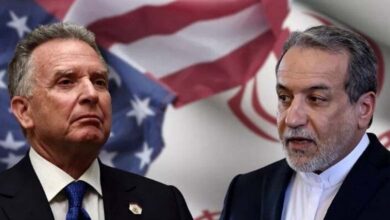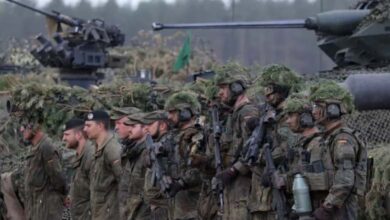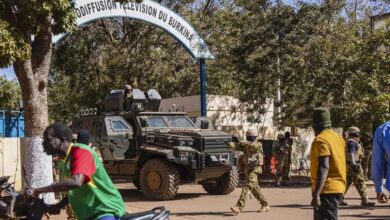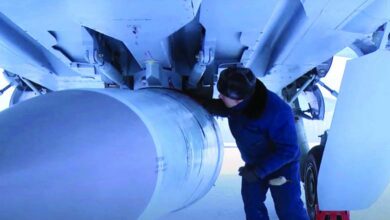Behind the scenes of the international force in Gaza: full details revealed
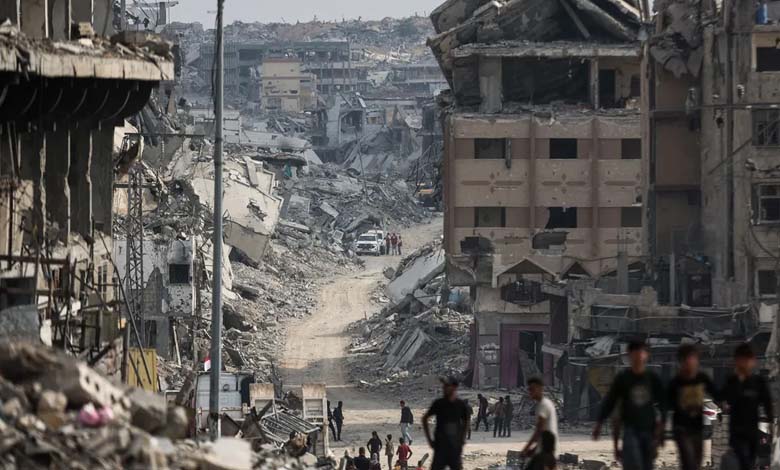
International teams operating at the U.S. Civil-Military Coordination Center (CMCC) in Kiryat Gat, southern Israel, are preparing the details of the international stabilization force expected to be deployed soon in the Gaza Strip.
The creation of this force was approved last week by a United Nations Security Council resolution at the request of the United States.
-
Stabilization Force in Gaza… a U.S. proposal colliding with Security Council barriers
-
CIA Information on Israel’s Alleged Use of Gazans as Human Shields
According to the Israeli newspaper Yedioth Ahronoth, given the absence of any previous global model and the bitter lessons drawn from UNIFIL in southern Lebanon, six guidance and analytical teams meet every morning on the third and top floor of the American CMCC.
The team includes representatives from 21 countries working to shape Gaza’s future. Most are enthusiastic, but they are awaiting a decision that will be taken far from the industrial zone of Kiryat Gat. It is clear to everyone that if the plan fails or is delayed, the biggest beneficiary will be Hamas.
The Israeli army estimates that within weeks to a few months, the United States will decide whether to establish the multinational force. Without it, the second phase of the ceasefire agreement with Hamas cannot proceed.
-
The International Force in Gaza: Cautious Concessions Open a Window for Consensus
-
From Israel to the United States: a shift in Gaza aid management
While UN legal advisers negotiate the force’s jurisdiction with their counterparts at U.S. Central Command (CENTCOM), six working groups in Kiryat Gat are preparing the field for rapid deployment.
They are planning the force’s weapons, exact areas of operation, mandate, mechanisms to prevent accidental exchanges of fire with the Israeli army, and special communication systems for the foreign soldiers arriving in Gaza.
Even the name of the force and the colors of the uniforms—intended to replace those of Israeli soldiers—remain under discussion. The force will be expected to carry out high-risk tasks, including locating remaining Hamas tunnels, destroying them, and collecting more than 20,000 weapons held by Hamas fighters, voluntarily or by force.
-
Israeli Defense Minister Orders Destruction of Gaza Tunnels: There Will Be No Hamas
-
The coexistence of opposites in Gaza: life pulsing among the dead
Contrary to various reports, the multinational force—if established and if countries, especially Muslim-majority ones, agree to send troops—will be stationed inside the Gaza Strip, not on Israeli territory.
The Israeli security establishment insists on this point, although the positions of the negotiating countries will carry significant weight, especially if concerns arise regarding the safety of their contingents.
Last week, the Americans revealed the structure of the command center to the media, hoping that publicizing its currently theoretical work would generate positive momentum and encourage concrete progress.
-
Ruling Gaza Until 2027: Details of the U.S. Draft Resolution at the UN Security Council
-
Hamas Fighters Inside the Yellow Line: A New Test for the Gaza Ceasefire
Limited coordination mechanisms have already proven effective. There are no official liaison officers, but when Hamas members—including armed fighters—emerge every few days to search for hostages, even near the Israeli side of the yellow line, the Israeli army does not target them thanks to tactical coordination.
An Israeli military official noted that things are becoming easier. Two years ago, the army had to prove repeatedly to the world and the United States that Hamas controlled humanitarian aid. Today, American personnel are physically present in the humanitarian aid command center and witness it daily.
-
Unexploded ordnance: a silent terror haunts Gaza after the war
-
Secret U.S. Report: Hundreds of Israeli Violations in Gaza Under Investigation
One of the most important teams is the intelligence group.
To prepare the multinational force for operational activity, Israeli military intelligence officers provide daily briefings to foreign officers, teaching them how Hamas operates as a military organization: the internal structure of tunnels, the time needed to rebuild access shafts after bombings, the makeup of Hamas platoons and companies, the types of weapons and ambush formations used—mainly guerrilla tactics combined with anti-tank fire and snipers, extensively deployed last year against Israeli forces.
The goal is simple: to ensure that the incoming force, possibly working in parallel with a trained Palestinian police force, is not caught unprepared in its first encounters with armed militants.
“There is no comparable multinational force in the world,” an Israeli army spokesperson said. “We looked for lessons to learn, focusing on what not to do.”
-
Safe Corridor… Details of a New US Offer to Hamas in Gaza
-
Israeli raids on Gaza: the heaviest loss of life in a single night since the ceasefire
UNIFIL’s experience in Sudan is cited as a negative model: although armed, its units tend to withdraw whenever fired upon. In many ways, the force planned for Gaza would be the first of its kind.
Responsibility for establishing the force was assigned to the special operations unit of U.S. Central Command, leading to the expectation that the soldiers deployed will not resemble Philippine or Italian observers serving in UN missions in the Golan Heights or southern Lebanon.
The term “UNIFIL” is repeatedly mentioned in discussions—but negatively. From the Israeli perspective, the force responsible for maintaining calm in southern Lebanon since the late 1970s represents exactly what must not happen in Gaza.
-
After the Truce… a Silent Enemy Threatens Gaza
-
New Gaza between American Opportunity and Palestinian Fears
UNIFIL’s failure—especially over the past two years—to withstand intimidation by Hezbollah, and its reluctance to enter private land to observe militia activities, is being studied as a negative example. Israel insists that such fear will not be tolerated in Khan Younis or Deir al-Balah.
Trust between sides is slowly building within the command center. When an Israeli Nahal Brigade unit enters Beit Hanoun or part of Jabalia to destroy a newly discovered tunnel on the Israeli side of the yellow line, the update is sent first to American officers, who verify compliance with ceasefire rules.
-
Harsh living and the specter of war: Gaza’s exhausted residents still suffering
-
Arab States Reject Israeli Plan to Divide Gaza
Regarding humanitarian aid, the humanitarian team is the most active. The United States recently announced that it would assume responsibility for aid entering Gaza, but in practice, Israel remains the primary authority. The Israeli army inspects aid trucks at crossings and makes key decisions regarding the ongoing ban on dual-use materials such as cement and steel, necessary to rebuild thousands of destroyed homes but also usable to excavate tunnels.
Another team is already developing ideas for new Palestinian neighborhoods. For most of Gaza’s two million residents, there are no homes to return to, as entire buildings and districts were destroyed or severely damaged by Israeli operations.
-
Vance Tackles Thorny Issues in Gaza: Hamas’s Arsenal and Reconstruction
-
Gaza Truce: Israel identifies a body as U.S. diplomatic efforts intensify to sustain calm
The team is designing prototypes for new neighborhoods and examining issues such as how they will be connected to electricity. Will neighborhoods rebuilt in Beit Hanoun be linked to a nearby Israeli power line near Sderot, or to the southern Gaza line supplied by Egypt?
Foreign participants are also discussing new water systems and fuel infrastructure, but their main focus is an unprecedented task in the Middle East since World War II: removing the massive quantities of rubble generated by two years of conflict. Estimates remain unclear, but the waste amounts to thousands or tens of thousands of tons, given the total destruction in eastern Khan Younis, Rafah, Shuja’iyya, and Beit Hanoun.
-
The recent escalation in Gaza: will it accelerate international oversight of the truce?
-
Serious truce violation: Israel strikes Rafah after vehicle targeted in Gaza
Another working group focuses on long-term issues: what Gaza’s future education system will look like, and what will be taught in schools and kindergartens. Some discussions even involve training mosque imams in hopes of preventing inflammatory rhetoric from religious institutions. Demographics remain essential: Gaza’s population is expected to grow by roughly 50,000 people per year.
Currently, around 150 Israeli soldiers serve in the U.S.-led international mechanism to safeguard Israeli security interests in the discussions.
-
Trump announces the start of Phase Two of the plan to end the Gaza war: pathway and obstacles
-
Massive destruction as thousands of displaced Palestinians return to Gaza
Italy and the United Kingdom have shown particular interest in how the multinational force will destroy Hamas tunnels, drawing on their extensive military engineering experience—especially within NATO. Australia is also involved, while Hungary and Denmark focus more on humanitarian aid processes.
The prevailing view within the Israeli defense establishment is that Gaza’s future will clearly involve localized Palestinian governance under temporary international oversight and assistance—support that may ultimately become permanent.


